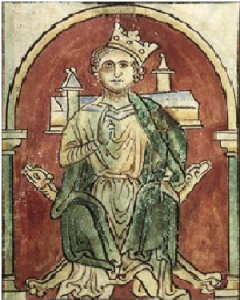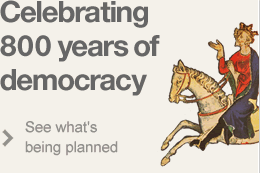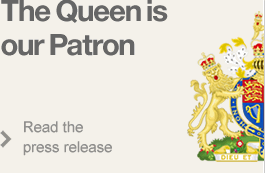 The four movements of Magna Carta! depict the events that led up to the Great Charter of 1215 and the characters who were involved – the King, the barons, churchmen, courtiers, officials and ordinary people. Built from easy-to-learn tunes, woven together in two, three and four parts with a lively accompaniment, it combines music and history in an entertaining concert piece for schools and youth choirs.
The four movements of Magna Carta! depict the events that led up to the Great Charter of 1215 and the characters who were involved – the King, the barons, churchmen, courtiers, officials and ordinary people. Built from easy-to-learn tunes, woven together in two, three and four parts with a lively accompaniment, it combines music and history in an entertaining concert piece for schools and youth choirs.
- Target age range 9-14
- Duration approx. 10 minutes
- Accompaniment – piano solo or piano duet; optional percussion
- Materials available for download or can be supplied in hard copy
- Backing and rehearsal tracks available
- Contributes to KS3 History, KS2 and KS3 Music
- Opportunities for dramatised performance including mime, costumes etc.
Movement 1: The Barons
Framed by a fanfare, the barons describe some of their grievances and look back at a few of the more disreputable moments in King John’s private life.
Movement 2: Church & State
Powerful churchmen intone a short plainsong. This becomes a slow cantus firmus against which we hear about King John’s clashes with the Pope and the story of Stephen Langton’s appointment as Archbishop of Canterbury.
Movement 3: Forest Law
Out hunting with his courtiers, the King claims a new royal forest. Local inhabitants sing about their oppression, as the hunt, sung as a round, carries on in the background.
Movement 4: Runnymede
It is a calm summer’s day by the Thames. As local rumours grow, the parties assemble and Magna Carta is signed. Some of the singers describe the immediate aftermath; at the same time, others look forward to the influence of the charter through the next 800 years. Between the movements, King John speaks key paragraphs from the Charter.
Philip Young studied English and Music at Corpus Christi College, Cambridge. His musical career has included teaching, examining, conducting, composing and arranging. In 2007 he retired as Director of Studies at Bedales School. For many years he has been closely involved with musical organisations in Petersfield and East Hampshire, where he currently chairs the Petersfield Musical Festival and conducts at the festival’s Youth Concerts.
Scoring
Singers: The piece is scored for singers in up to four parts, all singing straightforward tunes. Range: a twelfth from A below middle C , with one part extending to F#.
Piano: The accompaniment can be played in full by one pianist. The parts in the duet transcription are less demanding technically.
Percussion: The percussion parts (up to 3 players) have been written with concert performance in mind but they can be replaced ad lib by synth keyboard or by improvised parts, or omitted altogether. The score includes timpani, clashed and suspended cymbals, snare and tenor drums, tambourine, triangle, sleigh bells, wind chimes, whip, tam-tam and tubular bells.
Materials Available:
For free download as pdf:
Full score
Lyrics
Piano/vocal
Chorus part, voices only (A5 booklet format)
Piano duet
Percussion (combined part for all players, with vocal cue line)
In hard copy:
Full score, spiral bound with lyrics £5
Piano/vocal score spiral bound £5
Piano/vocal stapled £3
Chorus part £1.50
Piano duet part £1.50
Percussion part £1.50
CD with rehearsal tracks emphasising each part, a balanced version, and a backing track without voice parts. £5
All orders plus post and packing.
Downloads
Click here to download the piano and vocal score!
More Information
Please contact Philip Young on philipyoungmusic@virginmedia.com, 01730 263539, or Fenns, Reservoir Lane, Petersfield, Hants GU32 2HX.
Featured Article
Today is the very anniversary of the sealing of the Magna Carta, that great charter which laid down the basis for English common law, now spread throughout the world. Magna Carta gave protection of law against despotism by...
Read on...Recent Articles
- Magna Carta's American Adventure
- 800th anniversary of Bristol...
- Bristol 800 concert and...
- Emancipation and Magna Carta
- Terrorism and Tolerance -...
- Magna Carta
- Magna Carta Benches mark...
- ABA Magna Carta Memorial...
Stay updated
If you would like to keep informed about the work of the Magna Carta Trust and our partners, please sign up to the newsletter below.
Become a Supporter
There are a number of significant supporter opportunities. Register your interest early to ensure the widest range of options.
Find out more




